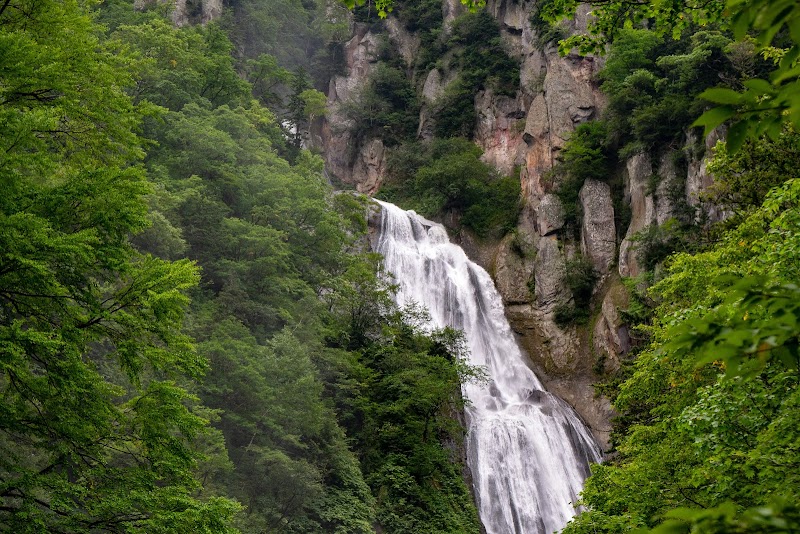
Chilling Wonders Await: Your Essential Guide to the Asahikawa Winter Festival
Experience the Asahikawa Winter Festival, a dynamic celebration of ice and snow artistry in Kamikawa, Hokkaido. From towering sculptures to vibrant nighttime illuminations, this festival offers an immersive winter adventure perfect for travelers ready to embrace the cold and explore the stark beauty of northern Japan.
Dress in Layers for Variable Conditions
Temperatures can swing with exposure and movement; wear moisture-wicking base layers and waterproof outerwear to balance warmth and breathability.
Wear Sturdy, Insulated Footwear
Snow and ice hide slippery spots and uneven ground. Insulated boots with good grip reduce fall risk and keep feet dry.
Stay Hydrated Despite the Cold
Cold temperatures suppress thirst but increase fluid loss. Carry a thermos with warm drinks and sip regularly throughout your visit.
Plan Transportation in Advance
Shuttle buses run frequently but can fill quickly during peak times; budget extra time for travel between sites.
Chilling Wonders Await: Your Essential Guide to the Asahikawa Winter Festival
The Asahikawa Winter Festival, held in Kamikawa, Hokkaido, transforms the city into a realm sculpted by ice and snow, where massive snow statues stand with silent pride, daring visitors to explore their frosty detail. This festival packs a potent mix of celebration and raw winter artistry, spreading across sprawling park spaces with installations that challenge the limits of cold-weather craftsmanship. The air, crisp and biting, carries the laughter of those wandering wide paths carved through thick blankets of snow, while nearby rivers push relentlessly beneath icy crusts, reminding you of nature’s ceaseless pulse.
Spread over seven days in early February, the festival offers easy access from Asahikawa, the region’s largest city, making it an ideal base for adventurers who prefer both urban comfort and wilderness escape. Getting around is straightforward — well-maintained shuttle buses link major sites, while walking routes reveal quiet corners where light and shadow play on sculpted ice walls.
Key highlights include colossal snow sculptures that can reach the height of multi-story buildings, and intricate ice art illuminated after dark with vibrant, colored lighting. These frozen creations are more than visual treats; they invite tactile interaction. Taste the chill as you touch surfaces smoothed by icy winds, their forms designed to withstand winter’s test.
Visitors should prepare for steady subzero temperatures fluctuating between -5°C and -15°C (23°F to 5°F), with the wind sometimes adding an edge that sharpens the senses. Practical footwear with waterproof insulation is non-negotiable, as snow and ice both cushion and conceal hidden unevenness beneath.
Hydrate regularly—even cold air dries your system fast—and bring layers that can be adjusted to changing conditions, since moving from outdoor festival grounds to heated indoor spaces repeats throughout the day. Early morning visits offer a quieter, softer light ideal for close examination and photography, while evenings burst into kinetic energy as lights energize the park’s expansive frozen gallery.
This is not just an event; it’s an encounter with winter’s force, shaped and celebrated by human hands yet wholly subject to nature’s whims. Respect for the elements and preparedness unlock both comfort and wonder here. Whether you’re a casual visitor or an explorer seeking seasonal extremes, the Asahikawa Winter Festival rewards those who come equipped and open-eyed.
Nearby Trips
All Adventures
Boat Charters
Water Activities
Adventures near Kamikawa, Hokkaido
Discover the unique and memorable adventures that make Kamikawa, Hokkaido special.
Frequently Asked Questions
How accessible is the Asahikawa Winter Festival for families or those with limited mobility?
The festival area is relatively flat with cleared walking paths, making it accessible for families and visitors with moderate mobility challenges. Shuttle buses and nearby facilities provide convenience, but some snow-packed areas might be harder to traverse with wheelchairs or strollers.
Are there any special cultural events or performances during the festival?
Yes, the festival features traditional Ainu dances and musical performances, live ice-carving demonstrations, and evening fireworks, giving visitors a glimpse of local heritage alongside the visual spectacle.
What local wildlife might one spot around Kamikawa during the winter festival?
Winter wildlife near Kamikawa includes red foxes, Ezo deer, and a variety of resilient birds such as the Eurasian jay and great spotted woodpecker, which add subtle life to the snow-covered surroundings.
When is the best time during the day to photograph the snow sculptures?
Early morning provides soft, diffused light ideal for detailed close-ups, while after sunset, the illuminated sculptures offer vibrant, colorful contrasts against the dark sky.
Is photography permitted throughout the festival grounds?
Photography is generally encouraged, though some performance areas and workshops may restrict flash or tripods to protect the atmosphere and participants.
How does the festival contribute to environmental sustainability?
Organizers emphasize ecological responsibility by using natural snow and ice care techniques, encouraging waste reduction, and promoting public transportation to minimize the event’s carbon footprint.
Recommended Gear
Waterproof Insulated Boots
Keep feet warm and stable on snow-covered, icy surfaces throughout the festival grounds.
Thermal Base Layers
Maintain core warmth during long exposure to cold air and wind.
Gloves and Hat
Protect extremities from frostbite and chill during extended outdoor time.
Reusable Water Bottle or Thermos
Helps you stay hydrated with warm fluids as outdoor cold dries your respiratory system.
Local Insights
Hidden Gems
- "Tokiwa Park - a quieter area with smaller, intricately carved ice sculptures and fewer crowds."
- "Asahiyama Zoo nearby offers a close look at cold-adapted animals after your festival visit."
Wildlife
- "Sable"
- "Hokkaido red fox"
- "Blakiston's fish owl (rare but a prized sighting)"
History
"The festival originated in 1967 to celebrate Asahikawa’s snowfall and foster community spirit through winter art and culture. It grew to become one of Japan’s largest winter festivals, showcasing both traditional and contemporary creative expressions in ice and snow."
